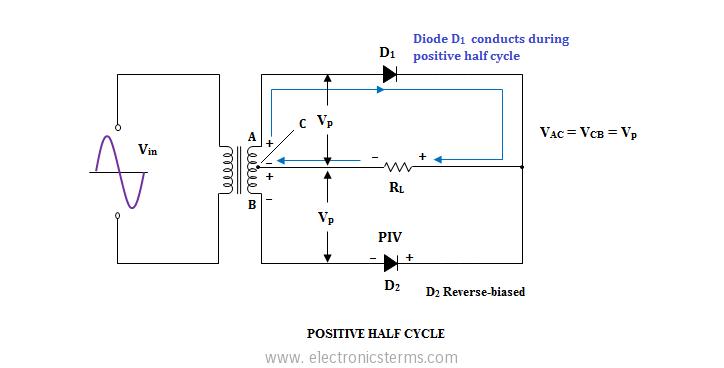Consider the circuit diagram of a center-tapped full wave rectifier where D1 is forward biased and D2 is reverse biased.
The maximum reverse voltage appearing across will be 2*Vp. Where Vp is the amplitude of input signal.
But VpSo the diode that is used in a center-tapped full wave rectifier should have a PIV of atleast twice the peak voltage of input sine wave. Otherwise diode breakdown will happen and current will flow through the reverse biased diode. And the circuit is not a rectifier anymore.
Similarly, PIV for a full wave bridge rectifier will be Vp.
